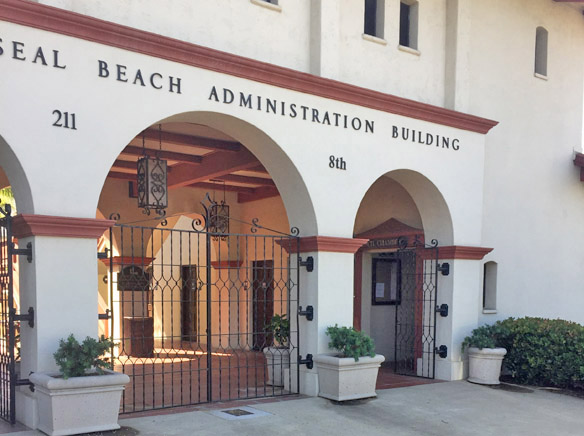Following a public hearing, the City Council unanimously approved the introduction of a Water Shortage Contingency Response Ordinance. The council also adopted and amended the 2020 Water Shortage Contingency Plan. One vote addressed both.
The update is required by the state government.
The public hearing was opened and closed without comment from the public.
The water ordinance was introduced to align the Seal Beach Water Shortage Contingency Plan with California’s six standard levels of water shortage responses, according to the report.
District Two Councilman Thomas Moore asked about the city’s educational outreach for water.
Iris Lee, who is acting director of Public Works, said that as soon as the water shortage ordinance is adopted staff anticipates rolling out the city’s educational outreach.
“When can we anticipate the ordinance,” asked District Five Councilwoman Sandra Massa-Lavitt.
Lee said: “Tonight is going to be the first introduction and there’s going to be a second reading at our next council meeting and then 30 days after that.”
Moore asked if staff was recommending a certain level of water conservation.
Lee said the state water board would probably mandate Level 2 on Tuesday, May 24. “So we will likely follow their direction, depending on what the resolution is,” Lee said.
According to the staff report that Lee prepared, a Level 2 water shortage would have the city notify its water customers that water use needs to be reduced by 11% to 20%.
“Who amongst our staff is going to be responsible for enforcement?” asked District One Councilman/Mayor Joe Kalmick.
Lee said the city has a consultant to help with conservation and they also do enforcement. Lee said the city had contacted the consultant and they are ready to begin educating the public when the ordinance is published.
“In 2018, the California Legislature modified the Urban Water Management Plan Act to include additional water shortage planning requirements. The California Water Code has had significant updates since 2015, specifically to Section 10632.1 and 10632.5,” according to the staff report prepared by Iris Lee.
“These sections now mandate new elements to the Urban Water Management Plan (UWMP) and Water Shortage Contingency Plan (WSCP), including an annual drought risk assessment and statewide water use prohibitions,” Lee wrote.
“The WSCP is a newly required strategic planning document designed to prepare for and respond to water shortages,” Lee wrote.
“The WSCP is intended to be the City’s operating manual that is used to prevent a catastrophic water service disruption through proactive, rather than reactive, management,” Lee wrote.
“A water shortage, when water supply available is insufficient to meet the normal expected customer water use at a given point in time, may occur due to a number of reasons, such as drought, climate change, and catastrophic events,” Lee wrote.












